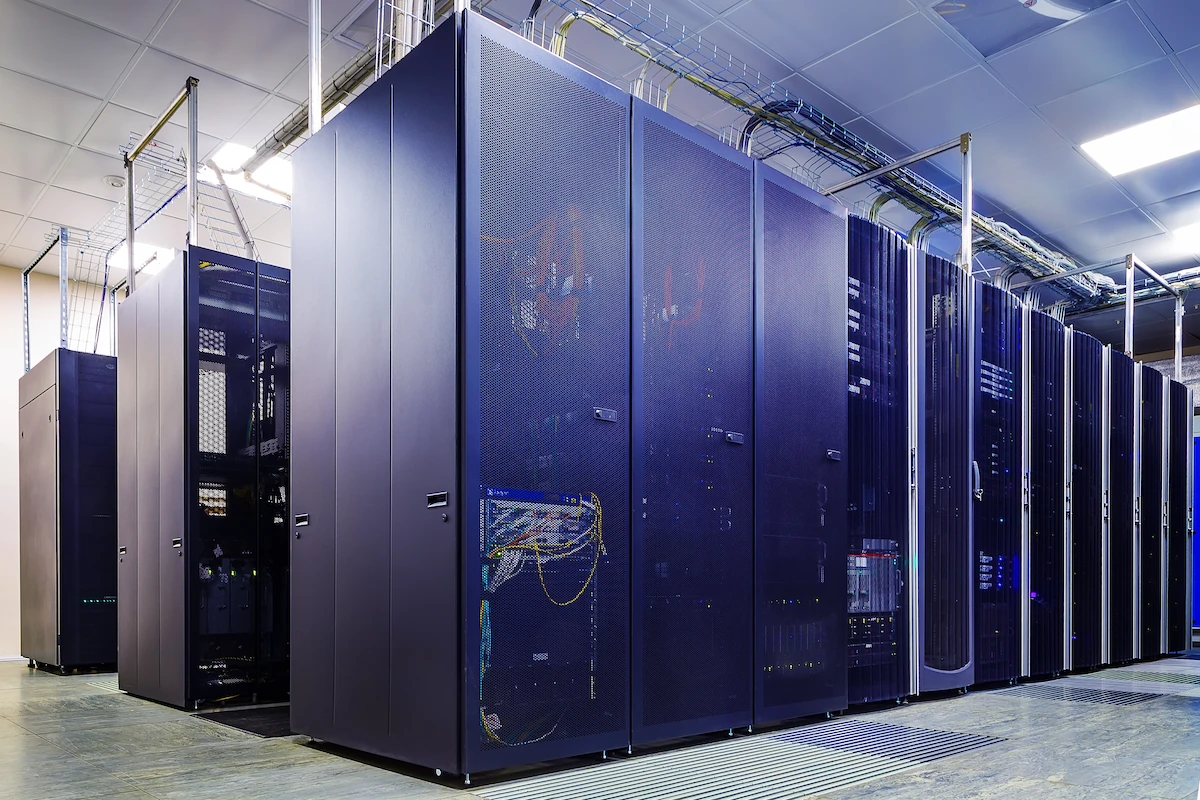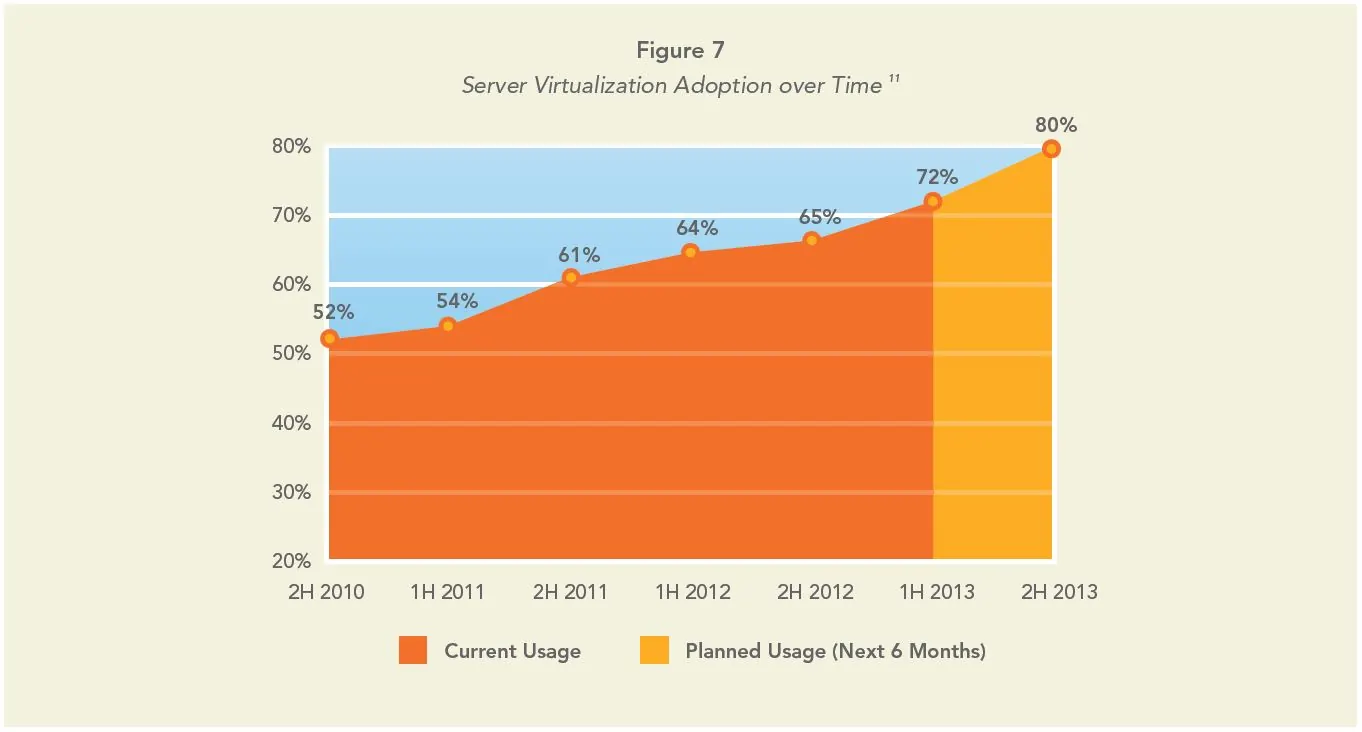The Importance of Mutual Understanding Between IT and Facilities – Part 7b: Airflow Management Best Practices15 min read

Adhering to airflow management best practices can reduce required airflow volume and allow you to increase cooling unit set points, lowering energy fan costs, lowering chiller energy costs, and increasing free cooling hours.
Server Virtualization
Server virtualization has long since passed the tipping point from buzzword to mainstream behavior. A recent study by Austin’s Spiceworks of the SMB market (summarized in Figure 7) clearly indicates the scale of this adoption rate. Virtualization alone has an obvious impact on the efficiency of the data center mechanical plant; however, those benefits are only partial until unused servers are actually taken out of service and the resultant obsolete cabling is removed from the data center, where it can provide an impediment to effective airflow.

Humidity
While humidity specifications are executed by facilities management, they are typically dictated by IT management. If these specifications are derived from manufacturers’ user documentation or guidelines from reliable sources such as ASHRAE TC9.9, then, if properly executed, humidity in the data center will be managed both effectively and efficiently. However, if those specifications arise from historic tribal knowledge, they will likely negatively impact the overall bottom line of the data center operation. Today’s recommended environmental guidelines are written around dew point with a maximum 60% relative humidity, as opposed to previous specifications which typically established a range such as 40% – 55% RH.
The key strategy with humidity is to first take advantage of all the airflow management strategies and tactics previously discussed in this paper to allow higher supply and return temperatures. The high temperatures will carry higher grain counts of moisture well above dew point to eliminate latent cooling penalty and maximize the sensible cooling capacity of the mechanical plant. At these higher temperatures, the allowable humidity range of 20%-80% RH become practical because the servers themselves will facilitate keeping the data center temperature above dew point. As a final word of caution, using CRAHs or CRACs as heaters to remove humidity from the data center and using steam generators to add humidity to the data center are excluded as acceptable practice by all data center standards, and are beginning to be outlawed by state and municipal building and energy codes. For good reason, we are at the tipping point for outgrowing those wasteful practices.
Return Air Isolation
Finally, the central airflow management best practice is to maximize the separation of the return air from the IT equipment air intakes. Aspects of this have been previously discussed in terms of hot aisle/cold aisle arrangement, chimney cabinets and containment aisles. Most of the hardware required for these best practices comes from IT procurement decisions, though implementation may rely on facilities cooperation. Other means for promoting this separation include open ceiling grates in hot aisles and using the space above a suspended ceiling for a return air path, or aligning a smaller computer room with one row of server racks on a raised floor facing away from the cooling unit(s) for a very short, very direct return air path. An alternative to this small room approach is the use of a slab floor with up-flow cooling units ducted over the top of the row of server racks with the same short, direct return air path.
Implementation
In planning the design for a new data center space, all these elements of best practices should be at the foundation of any plan. However, if the project is focused on improving the performance of an existing space, an orderly approach to implementation will usually produce better results than trying to do everything at once or randomly attacking obvious problem areas.
Following the path Upsite Technologies has called the 4 R’s can reduce the likelihood of re-do’s and the need to fix problems that have become bigger than they might have otherwise, had contributing factors been fixed first. Generally, the 4 R path involves first sealing the raised floor and then addressing the racks, then the rows, and then the room. There are steps and considerations for each of the 4 R’s.
11Spiceworks, “State of SMB IT 1H 2013: Semi-Annual Report on Small and Midsize Business Technology Plans and Purchase Intent,” May 29, 2013
The industry's easiest to install containment!
AisleLok® solutions are designed to enhance airflow management,
improve cooling efficiency and reduce energy costs.
The industry's easiest to install containment!
AisleLok® solutions are designed to enhance airflow management,
improve cooling efficiency and reduce energy costs.

Ian Seaton
Data Center Consultant
Let's keep in touch!
0 Comments